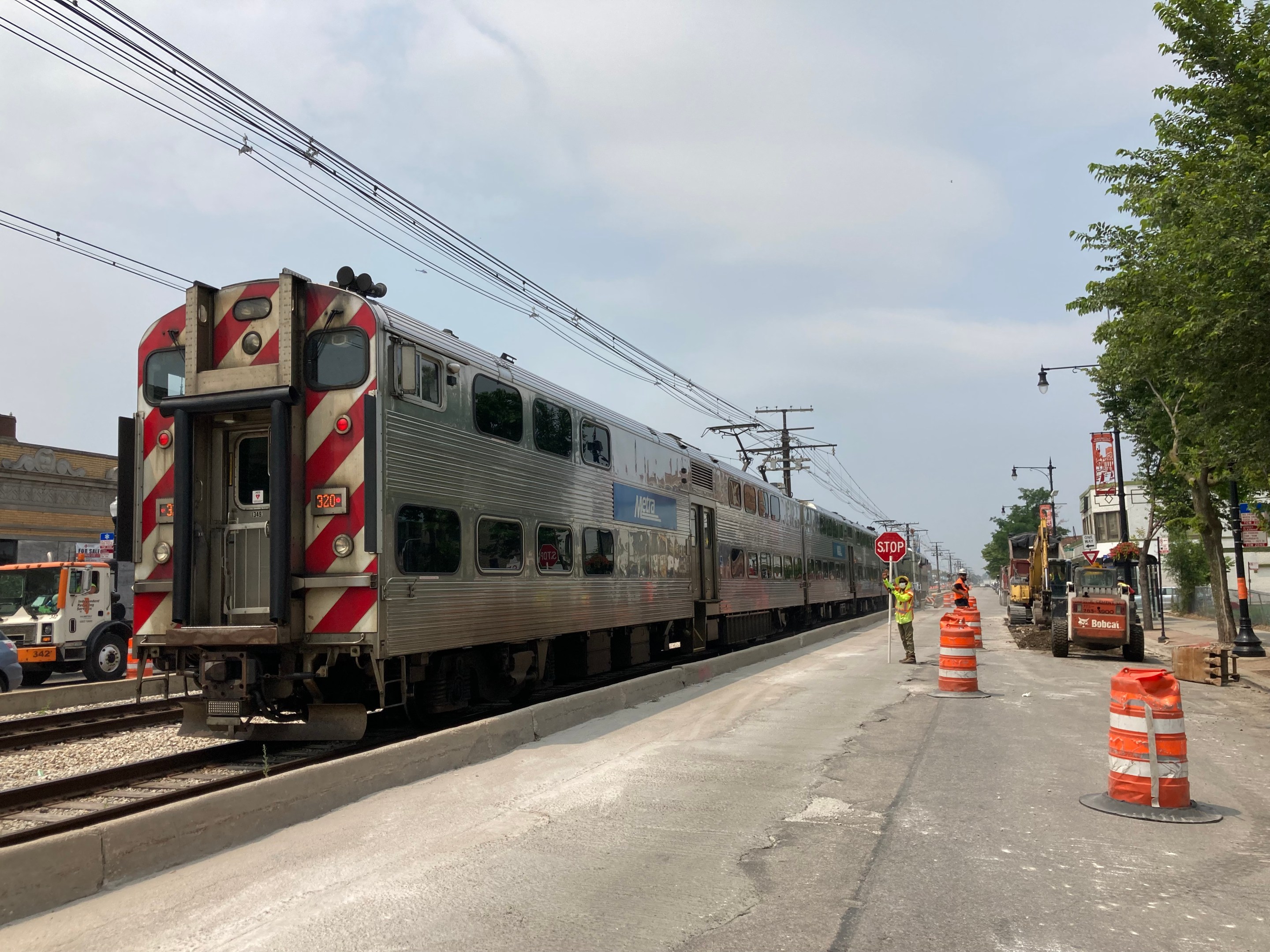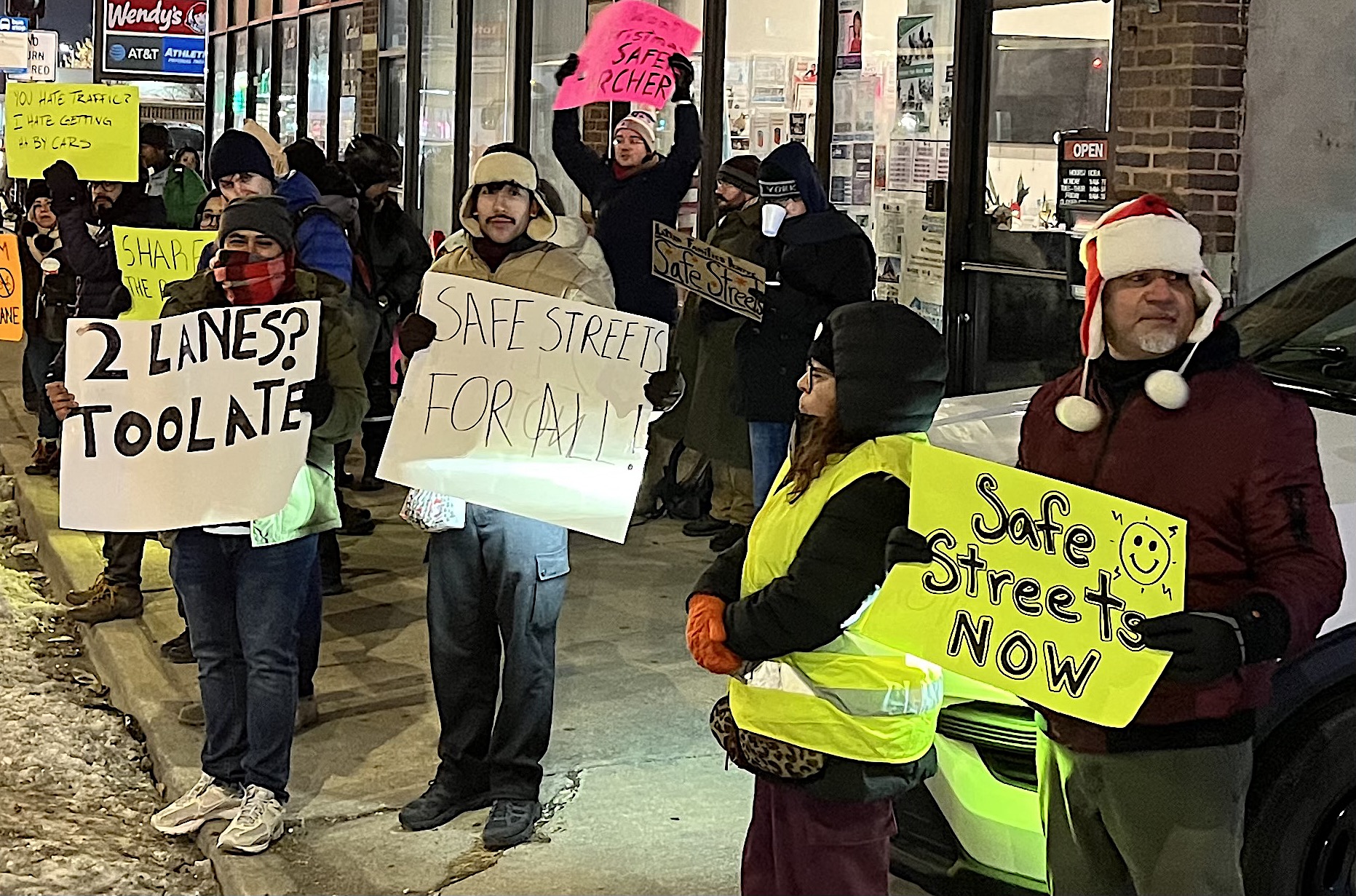It's been a long time time coming, but the Chicago Department of Transportation has finally kicked off a streetscape project is on 71st Street in South Shore, including some pedestrian and transit upgrades, and new buffered bike lanes that will connect to the south end of the Lakefront Trail. The roughly 0.75-mile project includes 71st from Jeffery Boulevard (2000 E.) to South Shore Drive (2600 E.) On this stretch of 71st, the Metra Electric District line's South Chicago branch runs through the middle of the street.
CDOT is also repaving 1.5 miles of 71st west of Jeffery to Cottage Grove Avenue (800 E.)
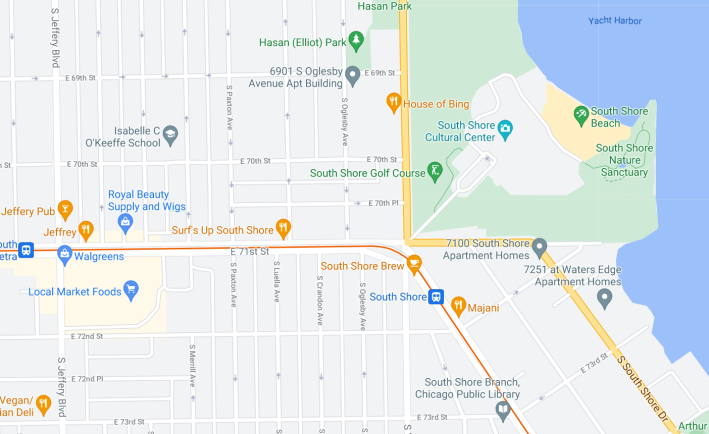
An earlier $4 million phase of the streetscape project included new sidewalks, old-timey street lights, trees, street furniture and "community identifiers." The latter are metal placards hung from the lamps that include the text "Distinctly South Shore" and images of the lakefront, the Museum of Science and Industry, and Jackson Park's statue of "The Republic," aka the Golden Lady. (Ironically, the statue is also on the city's Chicago Monuments Project list for possible removal because "It it is the largest landmark that commemorates [the 1893 World's Columbian Exposition], an event that presented a highly distorted vision of Chicago’s past and present.")
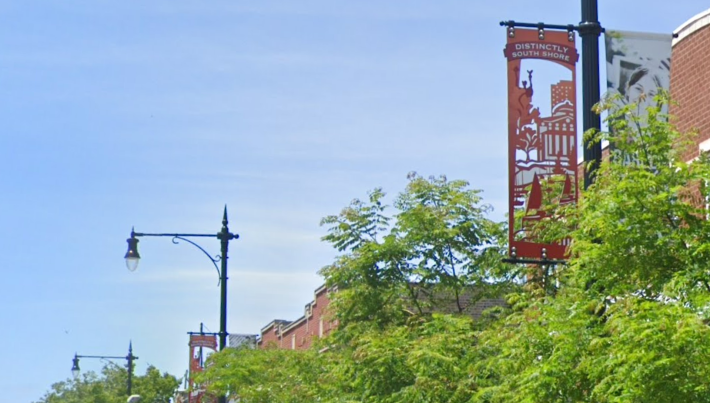
The current phase of the streetscape, which is also costing $4 million, is slated for completion by winter of 2022. It includes repaving the street and installing concrete bus stop pads, to avoid asphalt buckling under the weight of buses. ADA accessibility and pedestrian safety improvements will be made next to the Metra tracks. Higher-visibility zebra-striped crosswalks will also be added, and architectural fencing will be installed next to the Metra tracks.
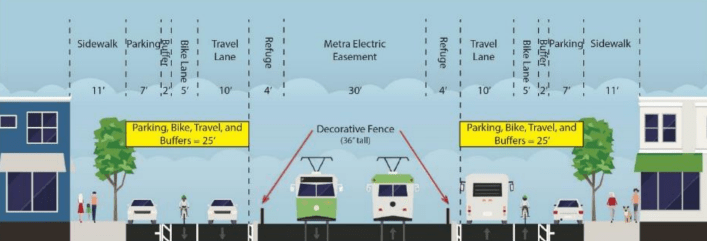
"They say good things come to those who wait, and Lord knows my community has waited," said local alderman Leslie Hairston (5th) at a groundbreaking ceremony for the project last week. "This streetscaping project is 13 years in the making." In a statement, she said that the initiative will beautify the corridor and make it more welcoming for people coming to the ward to visit the upcoming Obama Presidential Center, which will be located about a mile northwest of the project area in Jackson Park.

Later this year CDOT will be starting work on several transportation changes to Jackson Park associated with the OPC, including pedestrianizing a stretch of Cornell Drive through the green space. The department is also adding lanes to Jean Baptiste du Sable Lake Shore Drive and Stony Island Avenue near the park in order to placate drivers who are worried about the impact of the Cornell pedestrianization on their commutes.

Arguably the city should have increased transit access to the area instead of making DuSable Drive and Stony Island even more car-centric than they already are. However, some motorists are still complaining that the planned road widenings won't be sufficient.
Asked about that backlash to the Obama center transportation plans, Hairston argued that there have been "many, many" community meetings where residents could weigh in on the proposal. "If someone chooses not to engage, that's on them... There are more people excited about [the OPC] than not. This has been going on for five years and people just want the project to move forward."
View a presentation on the 71st Street streetscape project here.
